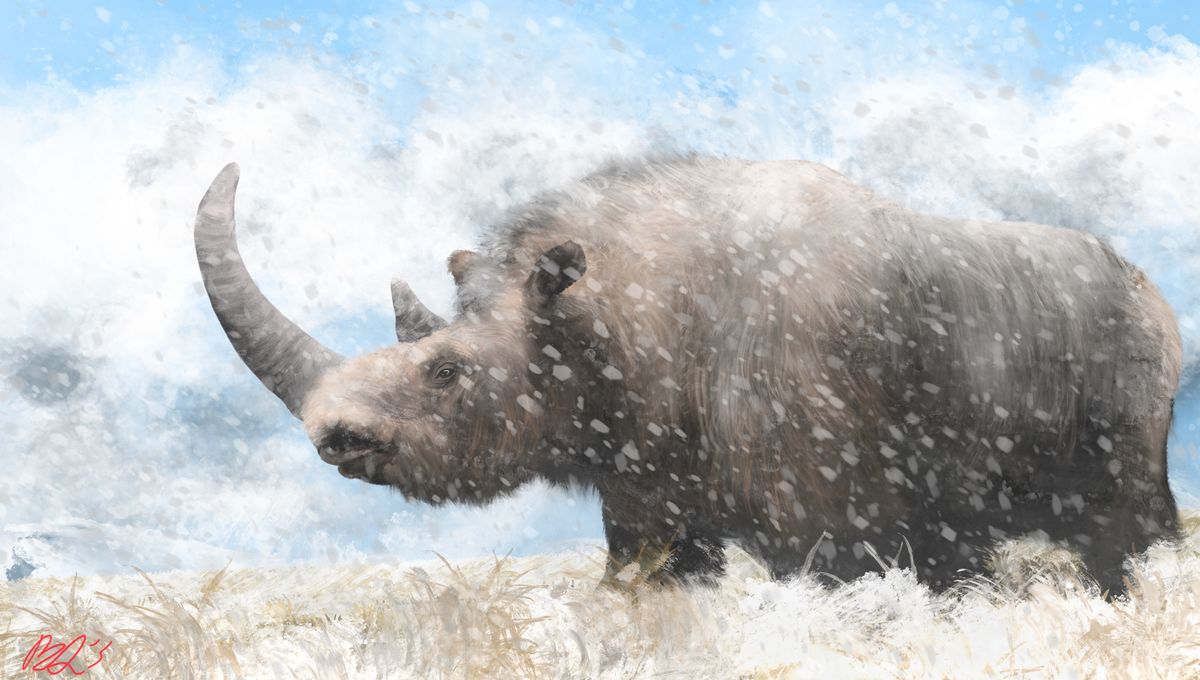
For the first time ever, the mitochondrial genome of a European woolly rhinoceros has been reconstructed. The now-extinct animals’ DNA was extracted from fossilized cave hyena poop found in Germany, revealing fresh insight into both species.
The woolly rhino (Coelodonta antiquitatis) roamed Eurasia in the Pleistocene until its extinction around 10,000 years ago. Several specimens have since been recovered, but until now, no genomes of European populations have been available – all genomic data has instead come from Siberian woolly rhinos – something that has puzzled researchers.
“I have no clue why there were no mitogenomes published yet,” Peter Seeber, one of the authors of a study presenting the latest findings, told IFLScience. “But it is a good question, considering the rich record of animal remains.”
To rectify this, Seeber and colleagues turned to coprolite, otherwise known as fossilized feces. It might sound gross, but prehistoric poop is actually an invaluable weapon in a palaeontologist’s arsenal, offering a rare glimpse into the genetics of the curious creatures of the ancient world.
In this case, the team analyzed the excrement of the extinct cave hyena (Crocuta crocuta spelaea), which preyed upon woolly rhinos. In doing so, they isolated European woolly rhino DNA and were then able to assemble a mitochondrial genome – something that had never been done before.
Mitochondrial genomes, or mitogenomes, are the genetic information found inside mitochondria, the infamous “powerhouse of the cell”. They are inherited from an organism’s mother and are more resistant to degradation than nuclear DNA, meaning they are incredibly useful when tracing ancestry.
As well as assembling woolly rhino mitogenomes, the team reconstructed cave hyena mitogenomes, allowing us a peek at the population dynamics of both species.
“The occurrence of variability in [woolly rhino] mitochondrial lineages indicates that the population dynamics over its vast range may have been very complex,” Seeber explained. However, “we need of course a lot more data from various locations throughout Europe for solid conclusions on population dynamics and ecology of this species,” he caveated.
“There are several mitogenomes of European (and Asian) cave hyenas available, so our results are an addition to these that might help elucidate population dynamics.”
While the DNA sequences recovered show signs of considerable degradation, possibly limiting their conclusions, the authors believe they may have found evidence of a population split around 450,000 years ago. The mitogenomes of European woolly rhinos are distinct from the Siberian population, suggesting a divergence of the two around the time the woolly rhinoceros pops up in the fossil record in Europe.
The findings provide a unique opportunity to look back at and learn about the ancient past, but may have relevance today too, especially in light of the current climate crisis, Seeber told IFLScience.
“Insights into the population dynamics of (sub)species that have gone extinct probably because of a changing climate may help predict future developments and the fate of extant wildlife populations.”
The study is published in Biology Letters.
Source Link: Ice Age Woolly Rhino Genome Reconstructed From Fossilized Hyena Poop